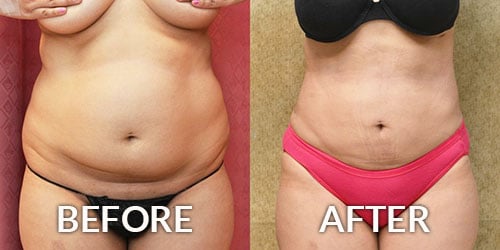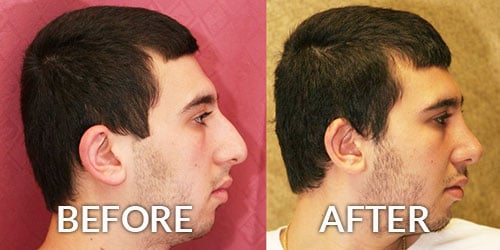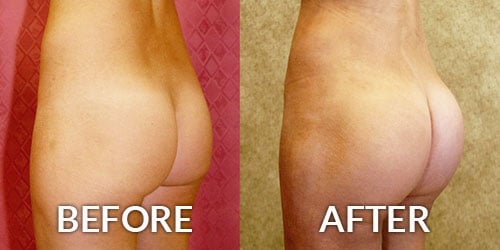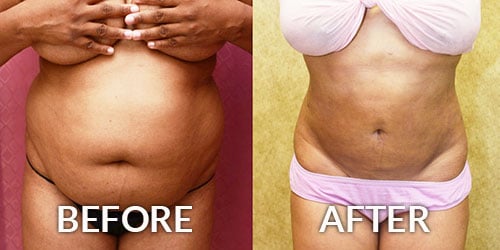Tummy Tuck Recovery
Consultations offered at our three convenient locations in Encino, Glendale and Bakersfield
Recovery after a tummy tuck takes time. Following my tips for Tummy tuck Recovery will help to shorten your abdominoplasty recovery time and swelling, as well as to make you more comfortable, and finally will help you to get the best tummy tuck results possible.
Abdominoplasty recovery time is about two to three weeks which is similar to other body contouring plastic surgeries such as a body lift, thigh lift, and large volume liposuction.
The Procedure
Abdominoplasty, tummy tuck, body lift, and thigh lift procedures are all performed under general anesthesia. After a tummy tuck procedure, patients are monitored in the Recovery Room for several hours until they are stable enough to go home, or to an aftercare facility.
In the Recovery Room, at the California Center for Plastic Surgery patients receive pain medications, antibiotics, intravenous fluids, and anti-nausea medications. Although pain medications help make your tummy tuck pain tolerable, they do not eliminate pain altogether.
During your tummy tuck recovery in the surgery center, you are also kept warm with special warming blankets and your calves are being massaged by special stockings. Because mobility of your extremities is very important to keep your circulation going to avoid formation of blood clots, your nurse might assist you in taking a few steps.
When you are stable to go home or to the after care facility your nurse will give tummy tuck after care instructions regarding care for your tummy tuck drains, diet, and dressing changes.
After Surgery
After a tummy tuck or a body lift it is normal to feel tight around the tummy, thighs, and buttocks. You would be wearing an abdominal or body girdle. There might be some drainage or soiling of your girdle from your wounds, which is normal. Do not change, remove, or manipulate your girdle until instructed to do so by your plastic surgeon. Make sure that the girdle is not too tight and that its waist is kept riding high at the level of your breast fold.
Within the first three hours after your surgery, it is not wise to eat much of anything, expect for liquids, because of the risk of vomiting.
Several tummy tuck drain tubes come out from the flanks or in the pubic area. These drains attach to a bulb-like collection container. The nurse will show you and/or your family how to record their output, and to empty them periodically. Make sure that there is no tension or pulling on these drains and empty them frequently.
In the bed, patients are positioned in a semi-sitting up position with the knees and the back bent. This reduces the tension on the tight abdomen and thighs. Once patients leave the recovery facility they are to remain in a semi-erect position when they are walking. Sitting up in a chair or a couch is absolutely fine. Make sure that you have enough cushioning and support. You may also lie on your sides, as long as you keep your body posture bent for the first 4 days after surgery.
Most people develop muscle spasm in their back or side muscles as a result of being in a bent position for several days. This can be helped by having your significant other massage your back muscles and apply gentle heat to these areas. You should not apply heat or cold to your surgical areas because it can potentially damage the circulation in these areas and result in complications. For detailed Abdominoplasty Procedure Instructions see Post Op Instructions for Tummy Tuck.
Tummy Tuck Recovery Tips
- Hydration: Although it is good to stay well hydrated, do not drink too much plain water, fruit juices, or carbonated drinks, because they can make you more nauseated. Mostly, drink Gatorade, Ginger ale, or tea.
- Ambulation: It is good to be ambulatory and not to stay sedentary. Walk around your room times a day to prevent formation of blood clots in your legs which is the number one cause of death after a tummy tuck. Too much walking or activity is not good and will increase your swelling!
- Compression Garment: where your abdominal binder or tummy tuck compression garment firm but not too tight. This will help reduce swelling from a tummy tuck.
- Take Pain Medication: keeping your pain level under control helps to reduce swelling, muscle spasm, and splinting. It increases your breathing, ambulation, and circulation. Don’t take Non-Steroidal Anti-Inflammatory Drugs for 2 weeks.
- Hydration: Although it is good to stay well hydrated, do not drink too much plain water, fruit juices, or carbonated drinks, because they can make you more nauseated. Mostly, drink Gatorade, Gingerale, or tea.
- Ambulation: It is good to be ambulatory and not to stay sedentary. Walk around your room 5 times a day to prevent formation of blood clots in your legs which is the number one cause of death after a tummy tuck. Too much walking or activity is not good and will increase your swelling!
- Iron: If you have had weight loss prior to surgery make sure that you are not anemic which can slow your healing and make you feel miserable. Starting Iron and Vitamin supplements one month prior to surgery helps you to heal better, faster, and easier.
- Take your time: don’t overdo it and no heavy lifting. It takes 2 weeks to get back to work, 6 weeks to feel ok, and six months to feel normal!
- Gently Massage: easy touching and massaging your abdomen, scars, and areas of surgery will help circulation and healing.
- Family & Friend’s Support: you need an attentive friend or family member to care for you on an hourly basis for at least one week.
Tummy Tuck Recovery Time Frame
- Week 1: During the first week you will need TOTAL CARE, to help you with getting around, bathing, rest room, medications, food, etc.
- Week 2: Starting the second week you will be more independent and might even be able to drive for short distances. You will still be taking pain medications and cannot do any heavy activities or housework. Tummy tuck drains will usually be removed in 10-21 days. You can now start applying tummy tuck scar creams.
- Week 3: Most people go to work by the third week after their tummy tuck. May start light exercise but no heavy lifting, bending, or abdominal exercises. Continue wearing your compression girdle at all times. Sex is OK but take it easy!!
- Week 4: At one month after a tummy tuck most people are doing their routine activities and exercises but not heavy lifting for two months. You may go swimming if all your incisions healed. You can take off your tummy tuck compression garment at nights.
- Week 6: You will still have moderate swelling of your abdomen and will still not feel like your usual self. Cloths might still not fit their best. As your abdominal skin feeling starts to return you will experience small sharp pains and jabs which are normal. Don’t wear your tummy tuck compression garment, and burn it!
- Week 12: By three months after your tummy tuck you will be about 75% healed and the results will start to show. There are no restrictions in terms of activity or exercise. Make sure to watch your diet and don’t gain weight.
- Week 52: Tummy tuck results stabilize by the first year, and you will be able to maintain your tummy tuck results as long as you watch your diet and lifestyle. Congratulations you made it!




